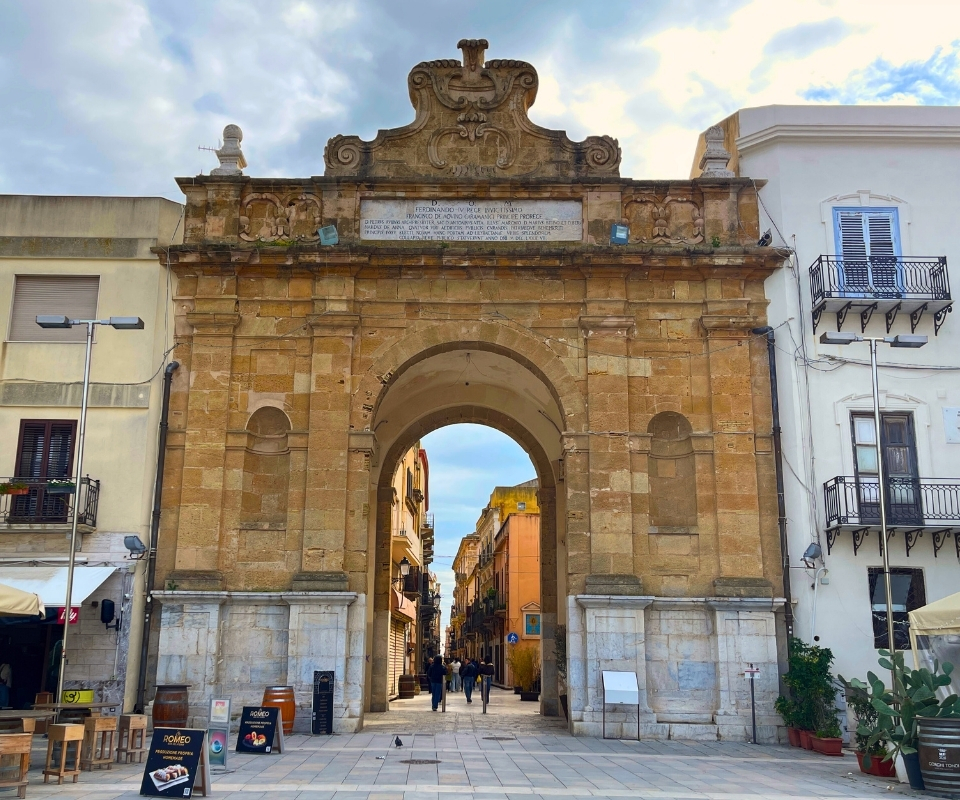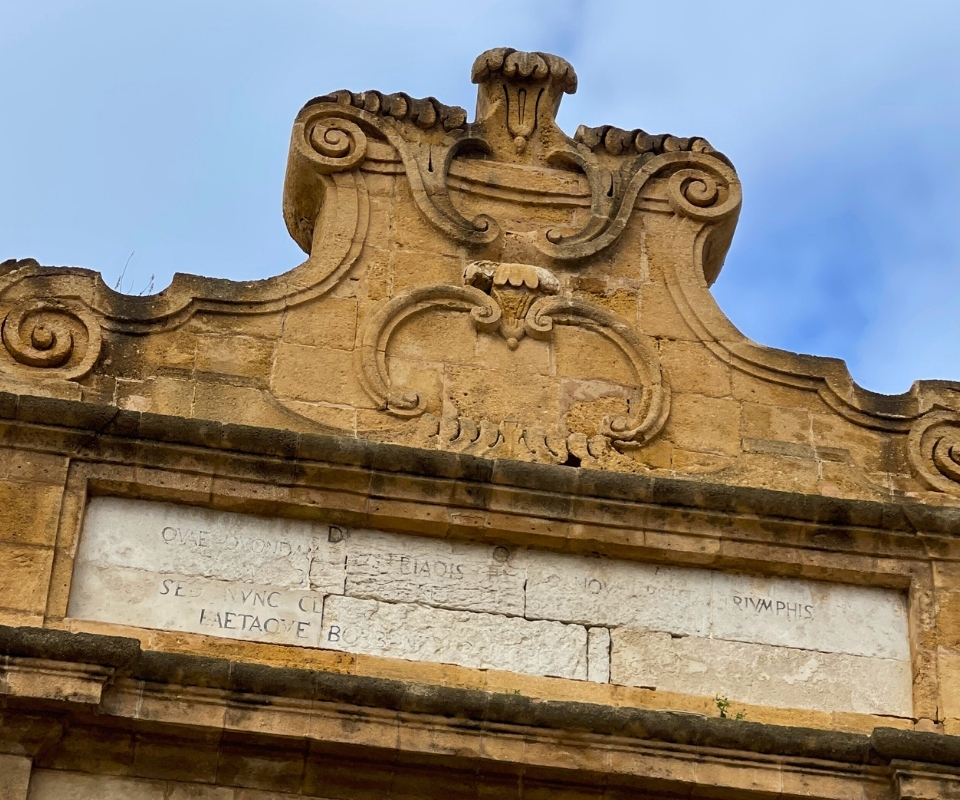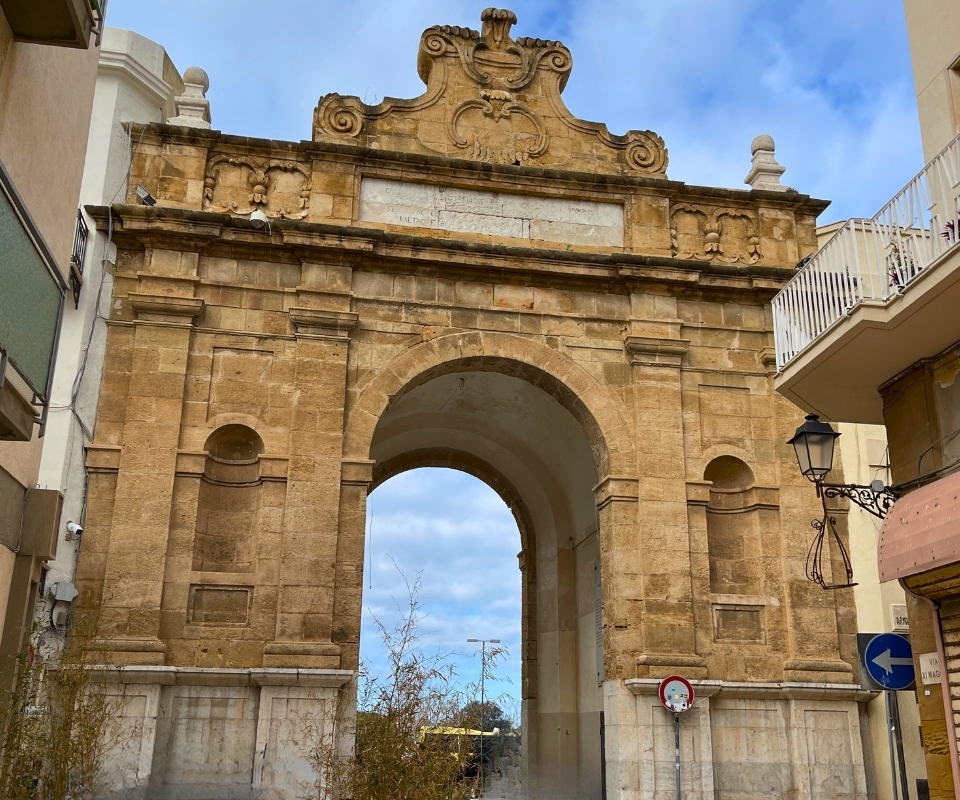At the opposite end of Marsala’s historic center from Porta Garibaldi, along the promenade of Via XI Maggio, stands Porta Nuova, another monumental gateway through the city’s ancient walls. Despite its name (“New Gate”), its origins are nonetheless historical: it was constructed in 1790 to replace a previous city entrance (once known as Porta di San Giovanni), which was made of wood and had become unstable and unsafe. At the time of its construction, toward the end of the eighteenth century, it was indeed named “Porta Nuova” precisely because it replaced the old structure with a more modern and solid gateway. Built during the Bourbon era, its simple and elegant stone arch, designed in a restrained classical style, was harmoniously integrated into the city’s coastal defensive walls. The architectural sobriety evokes sixteenth-century classicism, a style deliberately chosen by the architect: clean lines, a rounded arch framed by understated pilasters, and an unadorned, refined entablature. This simplicity lends Porta Nuova a measured elegance, contrasting with the more ornate Porta Garibaldi, making it a fine example of late eighteenth-century Neoclassical architecture.
However, there are several elements of historic and symbolic significance. On the inner side of the gate, facing Via XI Maggio, there is an inscription commemorating the military victories of Don Giovanni d’Austria, the hero of the Battle of Lepanto, evoking past Spanish glories. On the outer side, facing Piazza della Vittoria (the green area immediately outside the walls), another inscription records the names of the Giurati—the city councilors at the time—who authorized the construction of the gate. This detail offers an interesting glimpse into local history, highlighting the pride with which Marsala’s citizens greeted the gate’s construction. Beside the gate, the remains of the ancient defensive bastions can still be seen, and adjacent lies Villa Cavallotti, a public garden built atop the Bastion of San Francesco. From here, visitors can climb onto the walls and enjoy a splendid panoramic view of the nearby Egadi Islands and the sea that embraces Marsala. A small noble palace near Porta Nuova also preserves a commemorative plaque marking the place where Giuseppe Garibaldi spent the night of May eleventh, eighteen sixty, immediately following his historic landing in Marsala.
Today, the area around Porta Nuova, fully integrated into the pedestrian tourist route, offers two contrasting views: inward, along the Cassaro leading toward the city center, and outward, framing the natural scenery of the Stagnone lagoon and its islands. Passing through Porta Nuova symbolically means transitioning from the ancient city toward open spaces: even today, this dignified yet modest archway continues to mark the western boundary of Marsala’s historic heart, narrating through its inscriptions and surroundings stories and curiosities dating back over two centuries.
360° Virtual Tour
How to get there





